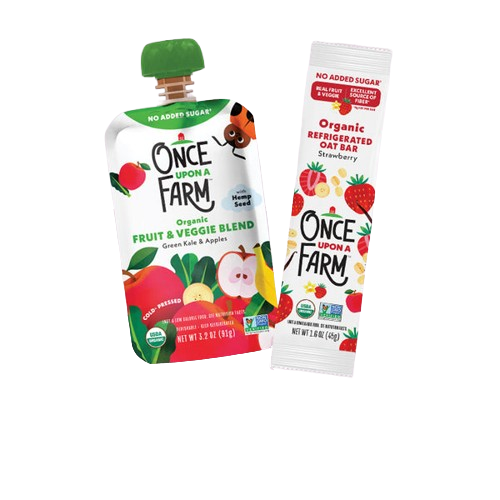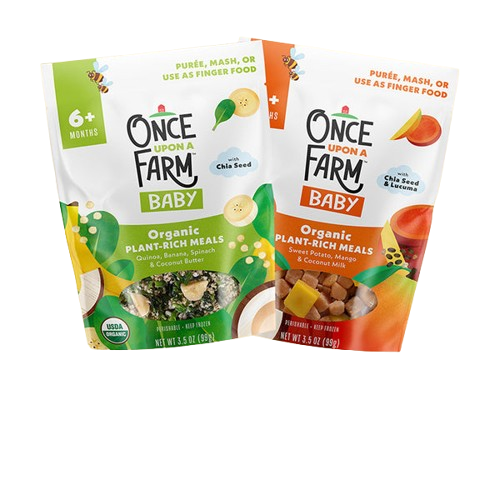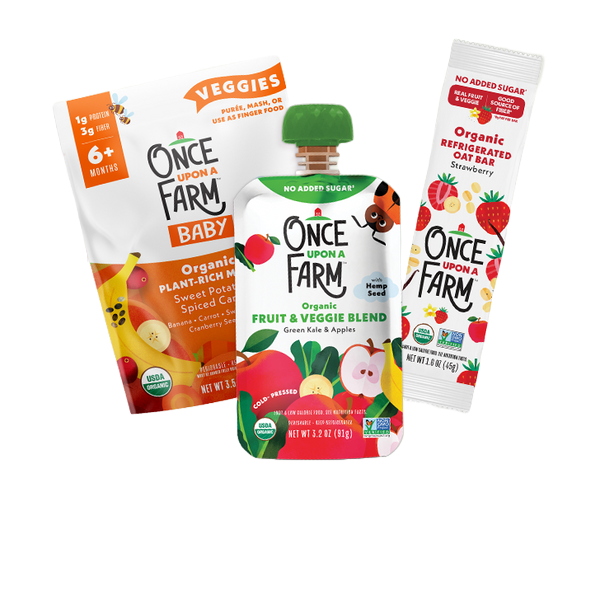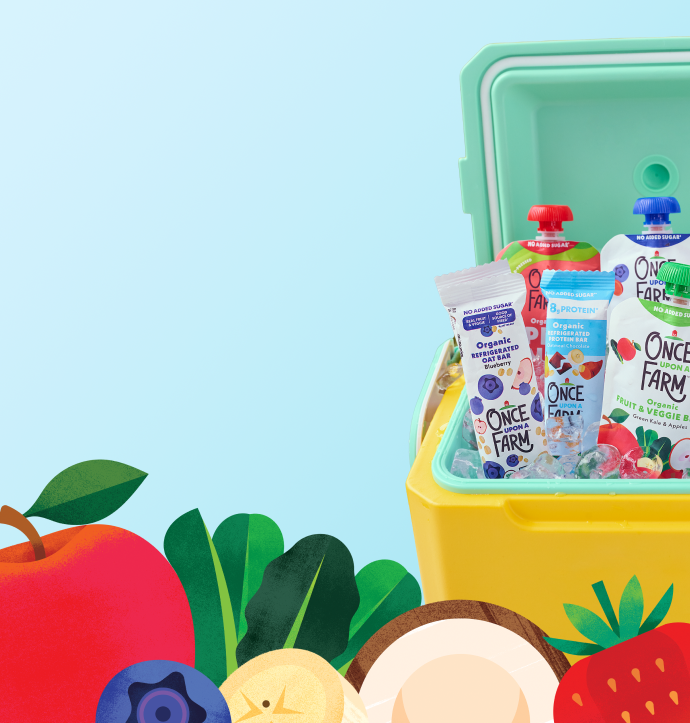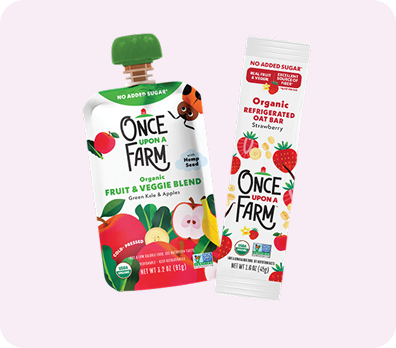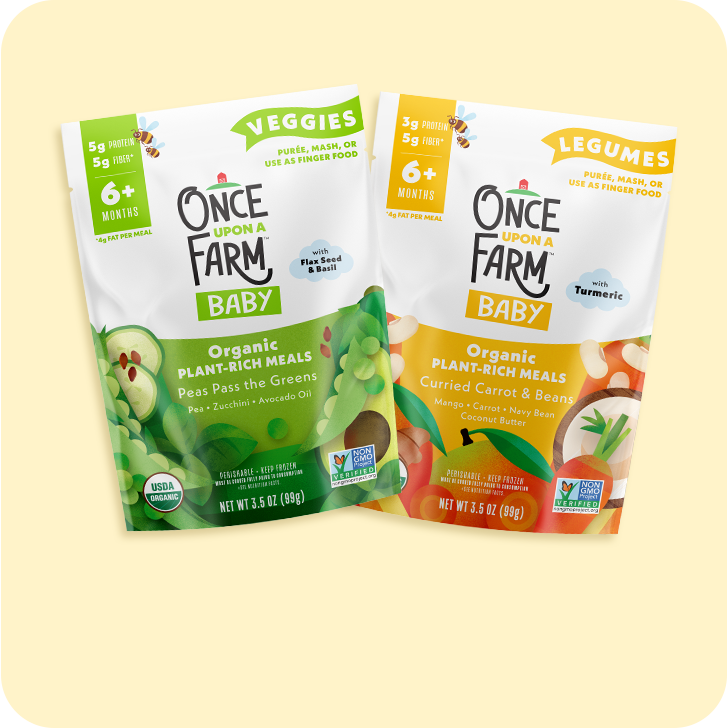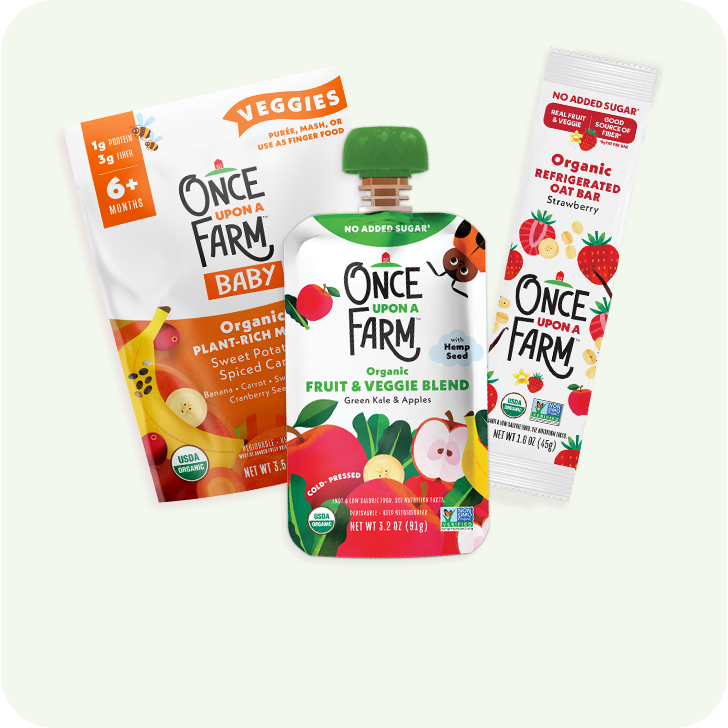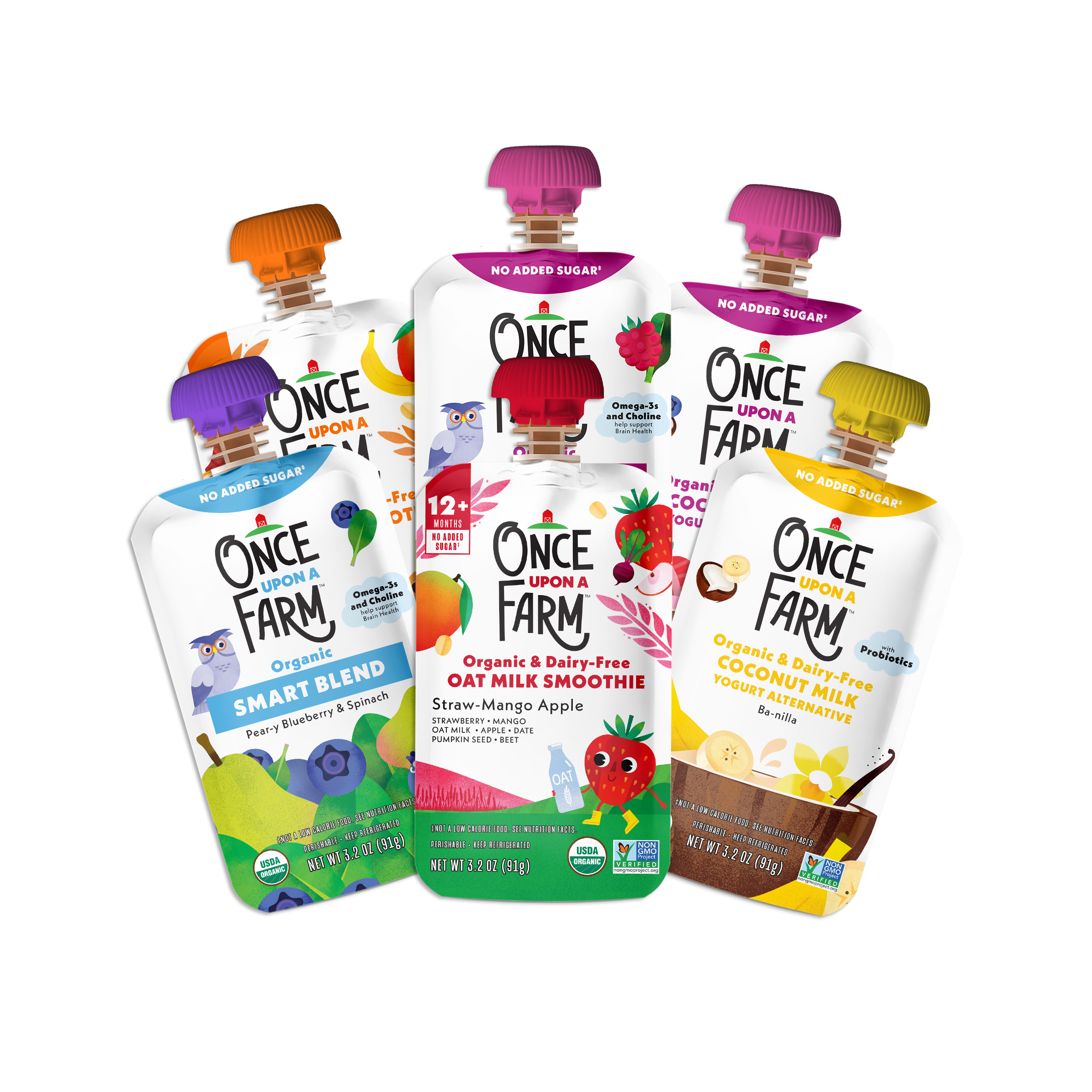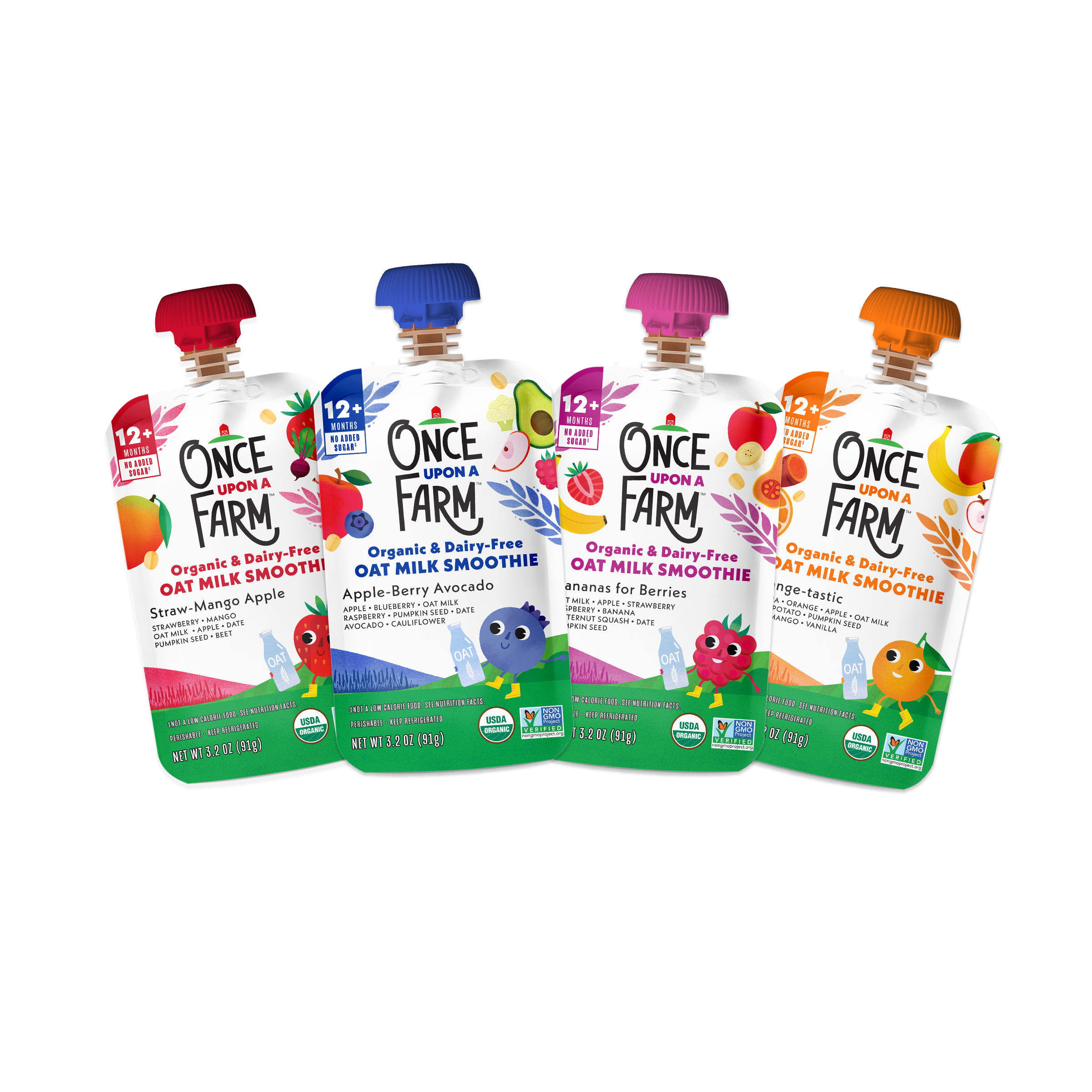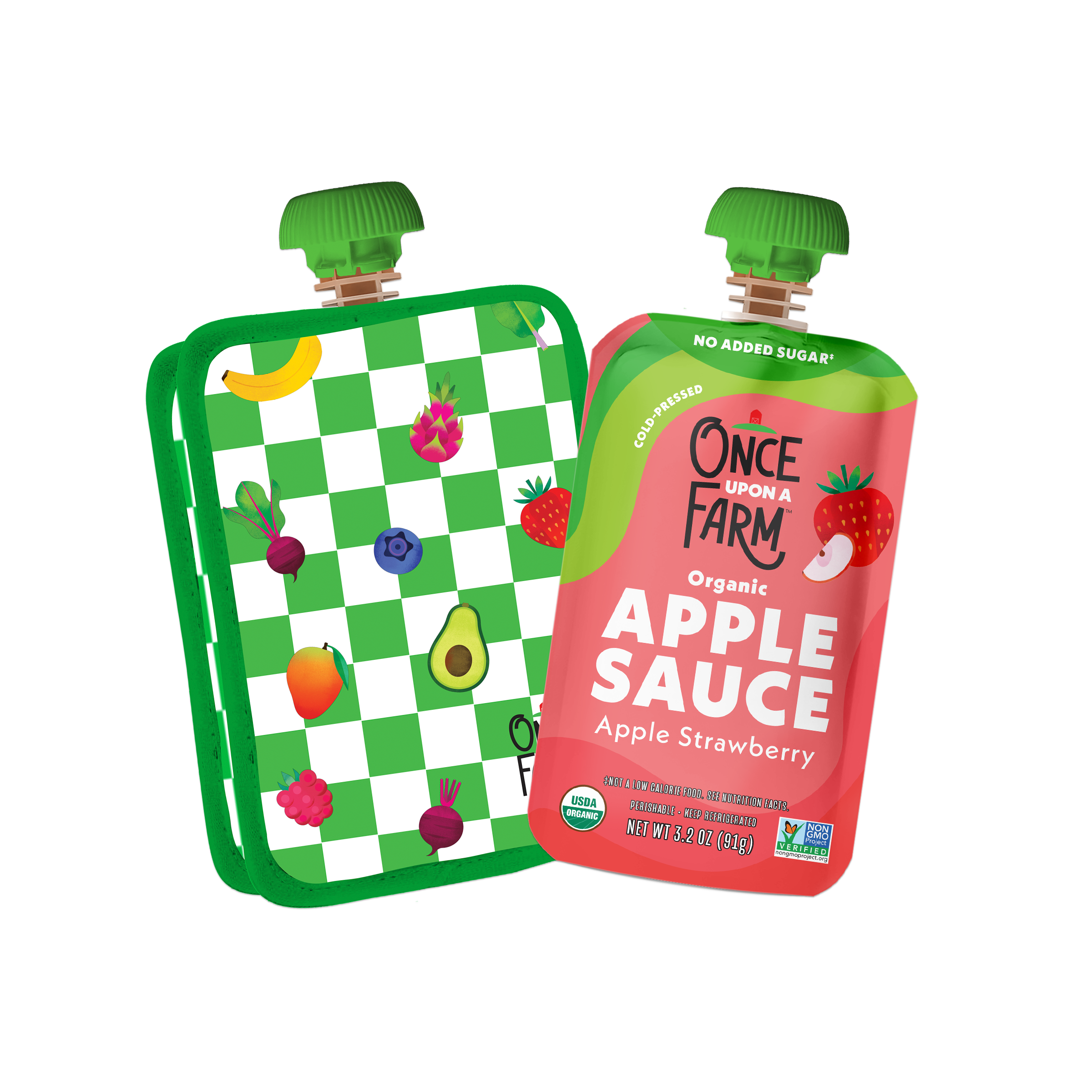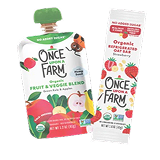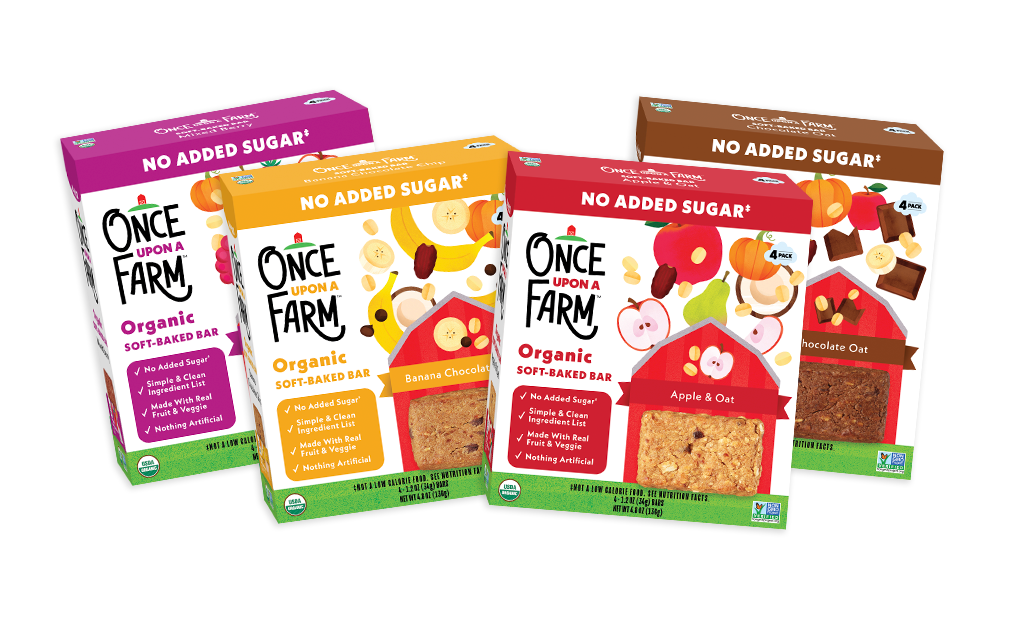Note: This blog is not medical advice and is for informational purposes only. For any specific recommendations or concerns, please refer to your child’s healthcare provider.
When it comes to starting solids, you’ve got a full plate of options. One popular method is called responsive feeding. To find out everything about this approach, and help you decide if it’s right for you and your little one, we asked O’Farm expert, certified feeding therapist Melanie Potock, MA, CCC-SLP.
What Is Responsive Feeding?
Responsive feeding is an approach that embraces communication between baby and parent or caregiver. As Potock explains, “It helps babies listen to their own internal cues while communicating via body language and vocalizations how much food feels comfortable in their bellies.”
When babies start solids, naturally they have many reactions, but not many words at first. Thus, Potock says, “It’s essential that parents are able to read baby’s cues and attempts to communicate, then respond appropriately.” What you’re looking for are cues that reflect a baby's desire to eat, or not eat, as they learn to regulate their bodies. As your baby gains language skills, responsive feeding will focus more on back-and-forth conversation.
Reading Baby Feeding Cues
With responsive feeding, Potock says there are three main cues during mealtimes.
1. I Want More
- Cue: Baby leans forward, mouth open, with an eager or curious look on their face.
- Translation: “Yes, I’d like some of that yummy food please!”
2. I Need a Break
- Cue: Baby slows the pace, touches the food without opening their mouth, focuses on something other than the food.
- Translation: “Let’s keep eating, but first I’d like to take a little break.”
3. I'm Done
- Cue: Baby slows down, stops touching the food, turns away from food, or pushes it away—possibly shakes head “no”.
- Translation: “I’m about done…and now I’m really done!”
The Benefits of Responsive Feeding
“The beauty of responsive feeding is that it is both baby-led and parent-responsive.” It can promote healthy development and increase enjoyment of a variety of foods. This approach can also decrease fussy eating, as well as minimize incidents of overeating into adulthood.
Responsive Feeding vs. Traditional Feeding
Traditional methods of feeding focus on the baby consuming all the food offered by the parent. It assumes there is a specific amount that babies “should” eat. While well-meaning, Potock explains that this style of feeding can interfere with a baby’s intuitive eating and override their internal cues of hunger and fullness.
Responsive feeding is all about intuitive eating and respecting the baby’s internal cues, not assuming our kids “didn’t eat enough” or “should be eating more”. As Potock says, “It’s a dance where parents support baby’s desire to try new tastes and textures while respecting baby’s desire to pause, stop, or try another bite.”
Tips for Responsive Feeding
- Try your best to be face-to-face to enhance your ability to read the baby’s cues.
- If you’re choosing to offer a spoon of smashed or pureed foods, present a loaded spoon to the baby. If offering a loaded spoon, allow the baby to clean the spoon on their own.
- For pouches, let the baby use their fingers by squirting a bit of food directly into their dish or high chair tray. When you notice they are signaling for more, squeeze a bit more onto their finger or the tray.
- When serving safe hand-held foods for independent self-feeding, allow the baby to take the lead while offering gentle support as needed.
- For self-feeding, if you want to help them take a taste, try holding the food in front of them, waiting for them to lean forward slightly and open their mouth. Rather than placing food into their mouth, let their lips and gums do the work as you steady the food.
- Another self-feeding option could include Once Upon a Farm Plant-Rich Meals. Give the baby enough food to spark interest, then watch for their cues that they want more.
When to Consider Feeding Therapy
If feeding your child is stressful, Potock says, you may consider a feeding evaluation with an occupational therapist or a speech pathologist specializing in pediatric feeding difficulties. Additionally, she shares, there are some signs you can watch out for that may signal a child may be having challenges in feeding development. These include, but are not limited to:
Babies
- Not gaining weight or weight loss
- Significant difficulty transitioning to complementary foods (safe solids) by the 7th month
- Frequent coughing or vomiting during or after snacks or meals; difficulty swallowing
- Extreme fussiness in the highchair or when food is offered
- Difficulty acquiring the motor skills for self-feeding
- Disinterest, distress, or hesitancy to interact with solid foods
Toddlers and Preschoolers
- Not gaining weight
- Coughing or vomiting frequently during or after meals; difficulty swallowing
- Strong reactions to new foods being presented at meal and snack times
- Limited foods they will attempt to eat
- Eating well in just one environment, but not in others
Watching your child discover the joy of food is a pure delight. Responsive feeding can be an incredibly nurturing and bonding experience as your baby learns to explore new tastes and textures, and tune into their unique wants and needs—and you are there to watch every smile, surprise, and, yes, grimace along the way.

